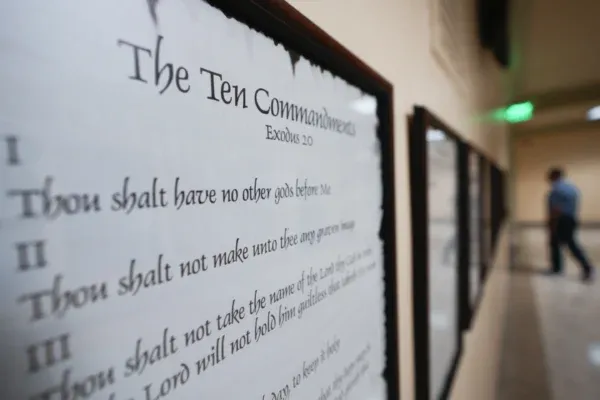Recent legislative efforts to increase the presence of religion in public schools have ignited unexpected conflicts among religious communities. Bills advocating for religious displays and school chaplains are encountering opposition from within the faith community itself.
Legislative Developments and Controversies
Several states have recently introduced or passed bills focusing on religion in schools:
- Louisiana: A new law requires public schools to display a version of the Ten Commandments. Despite support from some lawmakers, including Gov. Jeff Landry, the law faced immediate legal challenges from Christian clergy and other religious leaders. Critics argue that such laws intrude on religious practices and co-opt religious texts for state purposes.
- Oklahoma: The state’s Superintendent issued a directive mandating the incorporation of the Bible, including the Ten Commandments, in school instruction. This move has faced criticism from various religious leaders who argue that public schools should not function as religious institutions.
- Texas and Florida: These states have passed laws allowing school chaplains, a move that has also been met with criticism. Opponents, including chaplains and various religious organizations, argue that these bills are flawed and could be harmful to students due to the lack of standardized training and oversight.
Interfaith Opposition
Despite the apparent unity among some conservative religious groups in pushing these bills, they are encountering significant pushback from other religious factions:
- Christian Opposition: Even within Christianity, there is disagreement. Rev. Jeff Sims of the Presbyterian Church (U.S.A.) and other Christian leaders have criticized the laws, viewing them as governmental overreach into religious matters.
- Jewish and Muslim Responses: Jewish and Muslim leaders, along with secular groups, have also voiced concerns. Critics argue that such laws distort the religious significance of texts and may marginalize students from minority faiths or those without a religious affiliation.
- Secular and Interfaith Alliances: Organizations like Americans United for Separation of Church and State and the Freedom From Religion Foundation have joined forces with religious groups to challenge these bills in court. They argue that the bills violate the constitutional separation of church and state.
Legal and Political Context
The ongoing debates reflect broader tensions over the role of religion in public life:
- Supreme Court Influence: Proponents of the faith-focused bills are confident that the conservative-leaning Supreme Court might support their initiatives. However, past precedents and potential divergent opinions among justices, such as Justices Clarence Thomas and Neil Gorsuch’s view that the establishment clause applies only to the federal government, leave the outcome uncertain.
- Legislative Compromises: In response to opposition, some states have modified their approaches. For example, Indiana dropped its chaplains bill in favor of legislation allowing students to leave school for religious instruction.
Conclusion
The push to integrate more religious elements into public education has sparked significant debate and opposition from a range of perspectives. While some see these bills as a way to reinforce religious values in schools, others view them as problematic, arguing they blur the line between church and state and could marginalize students from diverse backgrounds.
FAQ
1. What does the new Louisiana law require? The law mandates that public schools display a version of the Ten Commandments in classrooms.
2. Why are some Christian leaders opposing the law? Some Christian leaders, like Rev. Jeff Sims, argue that the law is an intrusion of state authority into religious matters and co-opts religious texts for state purposes.
3. What are the criticisms of the Oklahoma directive? Critics argue that requiring the Bible as instructional support turns public schools into religious institutions, which could marginalize students of other faiths.
4. How have school chaplain bills been received? School chaplain bills have faced criticism for lacking standardized training and oversight. Opponents worry that chaplains may not be adequately prepared to serve diverse student populations.
5. What is the stance of the Supreme Court on these bills? While proponents are optimistic about support from a conservative-leaning Supreme Court, past precedents and differing views among justices make the legal outcome uncertain.
6. How have some states adjusted their legislation in response to opposition? States like Indiana have modified their legislation, opting for compromises such as allowing students to leave school for religious instruction rather than implementing chaplains.
7. What is the broader concern about these faith-focused bills? Opponents argue that these bills could undermine the constitutional separation of church and state and create divisions among students based on religion.



